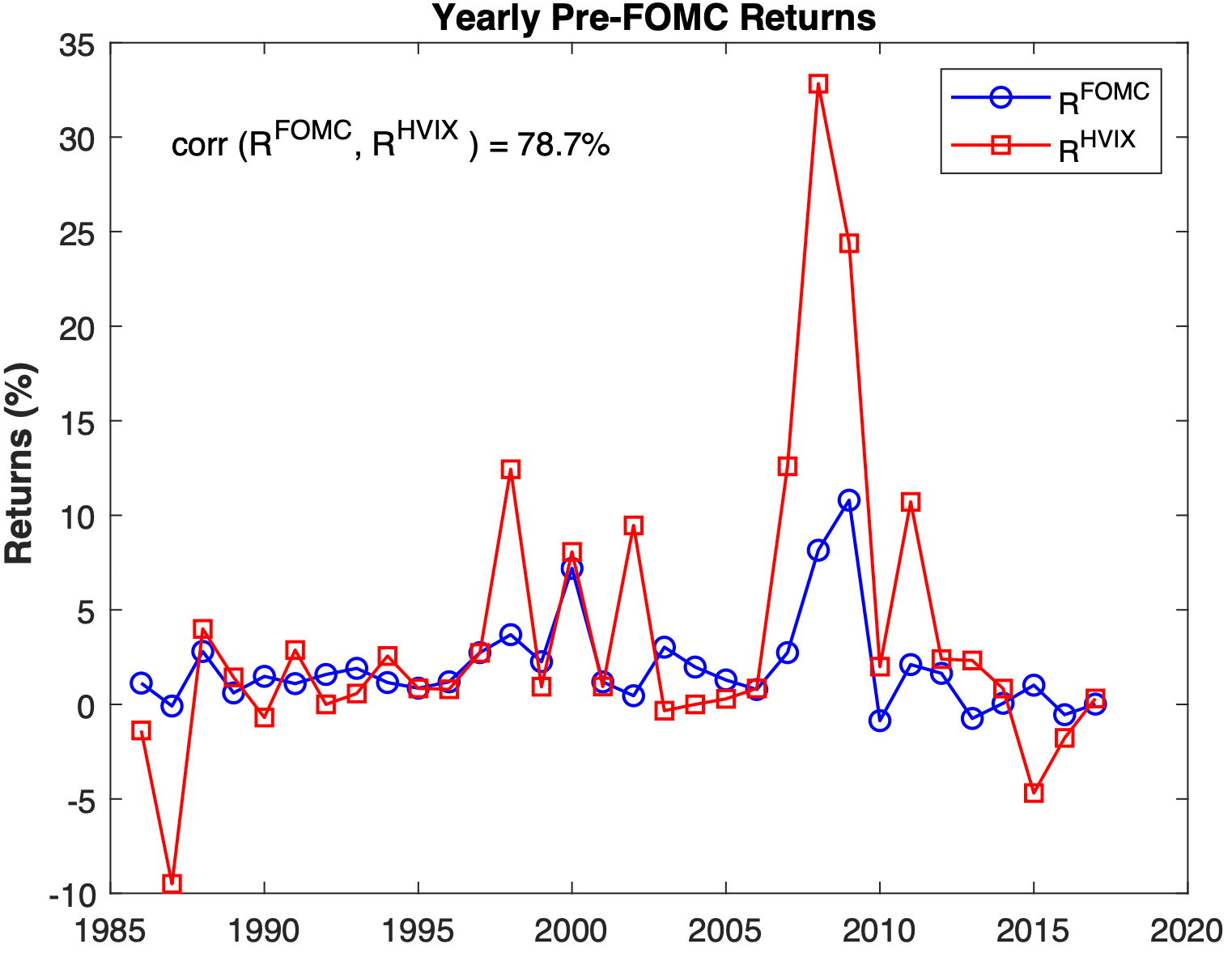Key Performance Metrics
📊 How Well Does This Strategy/Model Perform?
- Pre-FOMC Return: 27.1 bps average per event
- Annualized Return from FOMC Days (1995–2017): 2.24%
- Contribution: ~25% of total annual equity return from ~8 days/year
💡 Takeaway:
A small number of days tied to scheduled macro events explain a large portion of annual equity returns—driven by the resolution of uncertainty.
Key Idea: What Is This Paper About?
The paper solves the “FOMC puzzle”: why does the stock market drift upward before Fed announcements without increased volatility? The answer: investors demand a premium for “heightened uncertainty,” which is slowly resolved as the announcement approaches. The result is outsized returns on those days.
Economic Rationale: Why Should This Work?
📌 Relevant Economic Theories and Justifications:
- Risk-Return Trade-off, Recast: Uncertainty—not volatility—is priced. Conventional risk measures like VIX or realized volatility fail to capture anticipation risk.
- Information Arrival & Risk Premia: Scheduled macro news triggers uncertainty; the resolution of that uncertainty commands a return.
- Behavioral Finance: Market participants delay action until uncertainty fades, causing predictable drift as announcements near.
📌 Why It Matters:
The findings reframe how we think about risk in macro-sensitive markets and show that standard risk metrics miss critical dimensions of anticipated uncertainty.
How to Do It: Data, Model, and Strategy Implementation
Data Used
- Instruments: S&P 500 index and futures, VIX index
- Period: 1986–2018
- Macro Events Tracked: FOMC, Nonfarm Payrolls, GDP, ISM, and unexpected VIX spikes
Model / Methodology
- Event study of pre-announcement windows (4 PM day-before to 5 minutes pre-release)
- Regression of returns on lagged VIX and changes in VIX
- Compare pre-event returns on macro days vs. non-event days
- Use VIX spikes as an out-of-sample test for "heightened uncertainty"
Trading Strategy (Constructed from Insights)
- Signal Generation:
- Long S&P 500 futures from 4 PM before FOMC, GDP, NFP, ISM announcements
- Also go long after large VIX spike days (>3% increase in VIX)
- Execution:
- Hold until just before the announcement or close the next day (for VIX spike days)
- Risk Management:
- Trade small size—these are rare, high-conviction trades (~8 per year)
- Avoid trading during overlapping macro news releases or conflicting signals
Key Table or Figure from the Paper

📌 Explanation:
- Shows that only 8 days per year (FOMC + HVIX days) deliver over 30% of the annual return.
- HVIX (Heightened VIX) days deliver even more return than FOMC days.
- Highlights clustering of return premiums around macro news—suggesting time-varying, event-specific risk premia.
Final Thought
💡 It’s not volatility, but the anticipation of risk that drives returns. This paper shows how timing macro events reveals the hidden premium of uncertainty. 🚀
Paper Details (For Further Reading)
- Title: Premium for Heightened Uncertainty: Solving the FOMC Puzzle
- Authors: Grace Xing Hu, Jun Pan, Jiang Wang, Haoxiang Zhu
- Publication Year: 2018
- Journal/Source: SSRN Electronic Journal
- Link: https://doi.org/10.2139/ssrn.3282195
